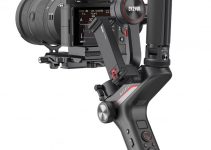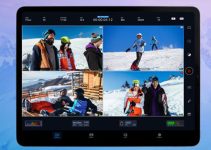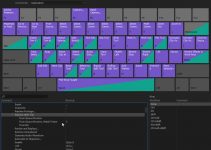Other than its amazing low-light capabilities, the Sony A7S III really packs a punch when it comes to your in-camera codec options. With the ability to record in an impressive 10-bit 4:2:2 in H.265, space saving H.264 8-Bit 4:2:0, and flavors-in between you might be scratching your head as to which video mode is the best for what you’re doing.
Everyone’s favorite Carl, Carl from ProAV TV, previously gave us the rundown on the codec options but now he is back again with an analysis of how those codecs measure up in post. Just what do these codecs look like? This might not seem like exciting stuff, but if you’re serious about getting the most of your $3,498 camera, you’ll definitely want to listen up and take note. Take it away, Carl!
For the most part, the codec options and compression quality of the Sony A7sIII are so good that it is frankly difficult to tell them apart.
There really isn’t much of a noticeable difference between XAVC-S, XAVC-SI, and XAVC-HS in terms of their sharpness. Sony has done a fantastic job with these codecs to give A7sIII shooters the best image quality regardless of which setting they choose.
You can easily jump over to XAVC-S to save on file sizes without worrying that the footage isn’t going to match.
This is, of course, until you start grading your footage in post.
Keep in mind, though, that is test isn’t perfect. There is no motion in any of these shots, and motion is a big part of compression.
Torture Testing
- Comparing XAVC-S, XAVC-SI, and XAVC-HS
Purely for the purpose of testing the limits of the quality, it’s always a good idea to push new cameras to the extremes when you’re getting to know it.
In the case of the A7sIII, madly ramping up the contrast and saturation it what it takes to make the differences between the codecs stand out. Interestingly, this is where we see the XAVC-S codec take the lead.
XAVC-S is a Long GOP codec, and seems to hold up well in this example because we’re parked on a still frame. Long GOP codecs store information across multiple frames so what we’re seeing here is some what of an illusion.
The areas of the image that seem less compressed actually are less compressed, but only because nothing is moving. If we were to play a Long GOP clip with lots of motion, we’d quickly see the image start to fall apart.
- Comparing 8-bit to 10-bit
One of the surprisingly simple features in the A7sIII is the ability to select the bit depth of your chosen codec – you almost never see these settings laid out so simple in a camera menu. You can easily decide whether you want to film in 8-bit or 10-bit color.
Given the option, I’m not sure why anyone would select 8-bit over 10-bit. It might seem nice to have the choice, but when the torture testing grade is applied to the shots you can quickly see the pitfalls of 8-bit.
It might look the same with a normal grade, but pushed to the extreme it totally falls apart. Gradient areas get weird blocky, pixelated colors, and the artifacts from the compression really start to stand out.
The 10-bit retains a smooth look. There really isn’t much to say here. If you’re given the option, always choose 10-bit over 8-bit.
Picture Quality and High Frame Rates
We’ve all gotten pretty used to sacrificing quality to be able to film in high frame rates, so the biggest question on everyone’s mind about the A7sIII is whether there would be a significant drop in quality here as well. After all, it does shoot in 120p 4K!
Fortunately, there is barely any difference in quality between 25p vs 50p, and only a subtle softening when filming in 100p. At the end of the day, this is very sharp slow-motion footage and a welcomed sight for all of us who have had to deal with shooting in HD to get real slow motion.
100p Real Time vs. Slow and Quick
On older Sony cameras, the slow and quick mode (where high frame rate footage was set to play as slow motion material in camera) was significantly softer than recording at the same frame rate and slowing the footage down in post.
This is an area where Sony has made drastic improvements. There is virtually no difference in 100p realtime and 100p slow and quick on the Sony A7sIII.
So which mode looks the best?
This might not be that exciting, but all of them match up so well that there really isn’t much to say about which setting would be the absolute best. If you need the room on your cards, you can bump down to 8-Bit XAVC-S and confidently know your footage will match well (as long as you won’t require a heavy grade).
Sony has helped Carl make one pretty dull camera test here by making all of these codecs so good, but that should make for one fantastic camera for you. Personally, I’ve never enjoyed shooting with a camera that had a ‘trick’ to it to make sure everything came out the best, and it’s great to see Sony has made this super-duper new camera something you can just run off to shoot with without any worry.
[source: ProAV TV]
Order Links:
Disclaimer: As an Amazon Associate partner and participant in B&H and Adorama Affiliate programmes, we earn a small comission from each purchase made through the affiliate links listed above at no additional cost to you.




